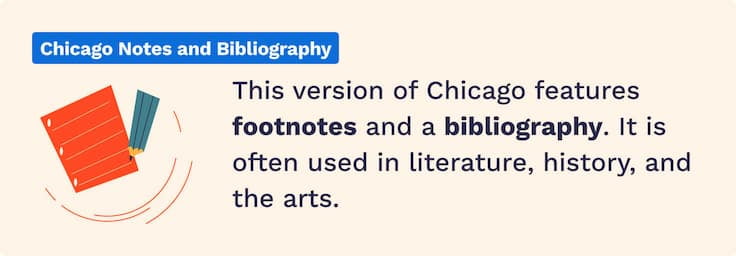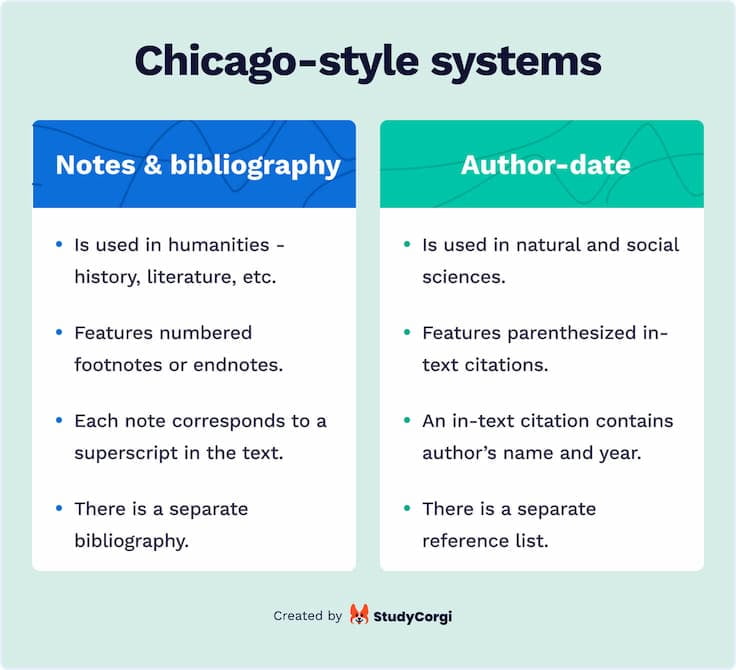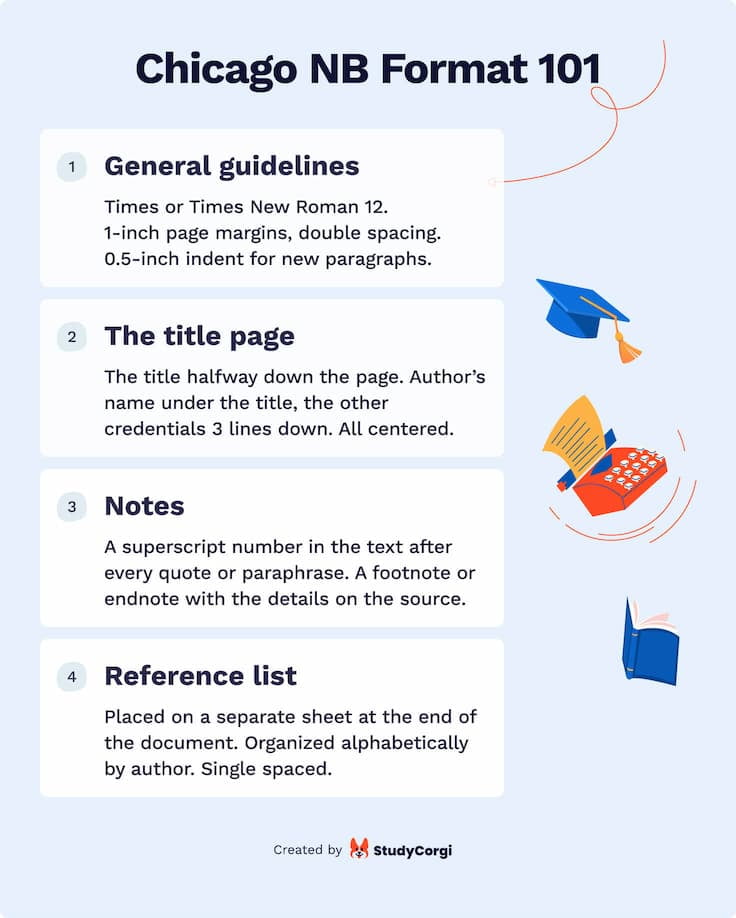🛠️ Chicago Cite Machine - How to Use It?
Take the 4 steps below to use the tool:
- Choose the type of source you wish to cite. It can be a website, a book, an article, a chapter in edited books, or a social media post.
- Provide the necessary information in the search bar. Users can paste URLs, titles, DOI, or ISBN information.
- Add the information manually if there are any difficulties with your search.
- Click “Cite” once you’re done.
Note that you can save bibliographical lists and name them. For example, “Death of a Salesman essay” or “Literature project.” Additionally, you can copy references and enable the “in-text citation” option. Users may even use the cite machine to download bibliographies in Word format.
🔥 Chicago Style Reference Generator Benefits
There are 4 key benefits of using our citation machine:
| 100% Intuitive | Our tool knows what you want from a citation. All users have to do is select a style and add the necessary information. You can use prompts to guide you through this process if it's your first time using our platform. |
| 100% Accurate | We’ve spent considerable time and effort developing and fine-tuning this tool. It generates quotes that strictly follow the current versions of modern quotation styles. |
| 100% Quick | You can quickly search for citations by title, DOI, and ISBN. They can be used to find suitable sources automatically. You can also enter requests manually if you fail to find the necessary sources based on their characteristics. |
| 100% Ad-free | Our platform is entirely free of intrusive banners and video ads. You won’t have to pay to disable the ads. |
📖 Chicago Notes and Bibliography Format 101
The Chicago Notes and Bibliography system is a referencing style used by many researchers, editors, proofreaders, copywriters, and publishers. Some call it an "editor's bible" because the Chicago manual covers everything from grammar to formatting.

The history of the Chicago style started more than a hundred years ago when the University of Chicago Press was opened in 1891.
We now use the 17th edition of The Chicago Manual of Style, which remains the authoritative reference work for the whole academic community.
The Chicago NB format is prevalent among scholars working in literature, history, and art.
The purpose of the Chicago NB format is to provide writers with an instruction for referencing credible sources through footnotes, endnotes, and bibliography. Proper use of the NB system builds a writer's credibility by demonstrating their understanding of the book or article. In addition, it protects writers from breaching intellectual property laws and plagiarism.
You'll find all the main requirements here if you also have chosen the Chicago NB format for your paper. However, to save time and effort, you can use our Chicago cite machine for doing all the work for you.
Chicago NB vs. Chicago AD
The Chicago style has two different methods for citing resources, the notes and bibliography method and the author-date method.
- The NB system uses footnotes or endnotes to cite resources that correspond with the bibliography at the end.
- The AD method uses in-text citations and a corresponding reference list. Before starting your research paper, check with your professor or university requirements to decide which method to use.

💬 Chicago Notes-Bibliography Citation Format
The below sections explain how Chicago notes and bibliography entries should be formatted.

General Guidelines
If your teacher expects to receive a paper formatted in the Chicago style, here're the main requirements to follow:
- It should have one-inch margins on the top, bottom, and sides.
- The possible fonts are Times or Times New Roman, 12 pt.
- The text should be double-spaced and left-justified.
- For paragraph beginnings, use the 1/2" indent.
- Start numbering from the first page of the text, and put the numbers in the top right corner.
- Do not count any pages after the bibliography.
- Consult with your instructor if you can print two-sided.
Chicago NB Cover Page
The cover page is the first page of your writing, so it is essential to format it carefully. To craft a perfect cover page in the Chicago style, you should:
- Center the title in the middle, halfway down the page.
- Put your name right under the title.
- Skip three lines before putting down your instructor's name, course, and date. Make sure all these elements are centered and located on separate lines.
- Avoid decorating your cover page with underlining, bold, or creative fonts.
- Avoid putting a page number on the cover page.
Check with your instructor if you need to include the title page and consider using our Chicago title page generator.
Besides the cover page, the key parts of Chicago-style writing include the body of the paper, appendix (if required), notes, and bibliography.
Generating Chicago Notes
In Chicago NB style, you can use either footnotes or endnotes to format citations from various literary sources.
Each time you want to quote or paraphrase another writing in your paper, you should put a superscript number in the text. This number leads to a footnote or endnote containing key details on the source.
Footnotes vs. Endnotes
To understand the difference between the footnotes and endnotes, remember the following:
- Footnotes appear at the bottom of the relevant page;
- Endnotes are located in a list at the end of the text (before the bibliography).
When writing a research paper, it's essential to stick to either footnotes or endnotes and not mix them.
Moreover, two types of footnotes are used in the Chicago style: full notes and short notes.
- Full notes introduce the first citation of each source;
- Short notes are used for subsequent citations of the same source.
However, the guidelines for short and full notes can vary across universities. Sometimes you might be required to use only a full or short note for every citation. If you're unsure, check with your professor.
Full Notes vs. Short Notes
Provide a full note when you first quote a source in your paper.
Full notes contain the main publication details, including the publisher, the year, and a page number.
Full note example:
Terence Hawkes, Shakespeare in the Present, Routledge EBooks (Informa, 2003), 12.
Provide a short note if you refer to a source that you’ve already quoted.
Short notes contain only the author's last name, the shortened title version, and the page number.
The page number isn't necessary if you refer to the information repeated throughout the literary source.
Short note example:
Hawkes, Shakespeare in the Present, 12.
No matter what type of footnote you choose to use, they appear at the bottom of the relevant page and correspond to reference numbers in the text. The reference number is placed in superscript at the end of the sentence it refers to. Also, remember that your footnotes should be numbered consecutively across the whole text, starting with 1.
Consider some more examples of footnote formatting.
Combining Multiple Citations
If you need to cite multiple sources in one sentence, combine the citations into one footnote.
Hawkes, Shakespeare in the Present; Kastan, Shakespeare and the Book; Halpern, Shakespeare among the Moderns, 12.
Sources with Two or Multiple Authors
Footnotes for literary sources with two or three authors include all the authors' names, but if there are more, add "et al." after the first author's name.
Hawkes et al., Shakespeare in the Present, 12.
Missing Information
If one of your sources doesn't have a publication date, use the abbreviation "n.d." for a full note.
Terence Hawkes, Shakespeare in the Present, Routledge EBooks (Informa, n.d.), 12
If a text doesn't state its author's name, put the organization that published it.
Routledge EBooks, Shakespeare in the Present.
Generating Chicago Bibliography
In Chicago style, the bibliography appears at the very end of the text. It lists all the sources cited in your text alphabetically according to authors' names.
Each entry from the bibliography begins with the author's name and follows the source's title and relevant publication details.
The primary purpose of the bibliography is to provide an overview of all the sources you referred to.
You can use our free Chicago style machine to generate accurate references automatically.
Bibliography Formatting
- The bibliography takes place at the very end of the text.
- The heading "Bibliography" is bolded and centered at the top of the page.
- Unlike the rest of the text, the bibliography isn't double-spaced. Between the entries, you only need a single line.
- If an entry extends onto more than one line, the following lines should be indented to make it clear where the new entry starts.
- Author names in the bibliography are inverted, with the last name coming before the first.
The Basic Structure of a Bibliography Entry
Here's a template you can use to format entries from your bibliography.
Author Last Name, First Name. Book Title: Subtitle. Edition. Place of publication: Publisher, Year. URL.
You only need to include the URL for literary sources you consulted online.
Example:
Twain, Mark. Is Shakespeare Dead? Routledge EBooks. Informa, 2019. https://doi.org/10.4324/9780429450884-56.
Bibliography Entry Examples
Book
Bennett, Tony. Outside Literature. London: Routledge, 2005.
Book Сhapter
Bennett, Tony. “Outside Literature”. Critical Illusions, 38-88. London: Routledge, 2005.
Article
Kennedy, Mary B. "Defining Literature." Educational Researcher 36, no. 3 (April 1, 2007): 139–47. https://doi.org/10.3102/0013189x07299197.
Website
Goodreads. "William Shakespeare (Author of Romeo and Juliet)." Accessed February 22, 2023. https://www.goodreads.com/author/show/947.William_Shakespeare.
🎁 Chicago 17th Edition - What's New about It?
This part will cover the most significant changes in the 17th edition of the Chicago Manual of Style. These are only the changes cornering the notes and bibliography.
- The formatting for titles of websites is treated differently now. If the website has a printed version, the title is in italics (The New York Times). If it doesn't, then the title isn't stylized (Buzzfeed).
- Before, the abbreviation "ibid" was used in footnotes to show that the previously referred source is being cited immediately after. However, in the 17th edition, it's recommended to use short notes instead of the "ibid."
- Besides the URL, you can now use DOI (Digital Object Identifier) to format website entries in the bibliography.
Thank you for reading this Chicago notes and bibliography format guideline! Note that we’ve also prepared similar tools and instructions for APA, Harvard, Chicago AD, MLA, and Turabian.
❓ Chicago Cite Machine FAQ
❓ How to cite a chapter in a book Chicago?
For a bibliography in Chicago style, you can cite a particular chapter from the book. You can either use our free Chicago cite machine or do it manually. Here's a template to use: Author Surname, First Name. "Chapter Title." Book Title, edited by First name. Last Name, pages range. Place of Publication: Publisher, date.
❓ How to cite a newspaper article Chicago footnote?
To cite a newspaper article for footnotes, you can use this template: Author's First Name, Surname, "Title of the article: Subtitle," Title of newspaper, Month Date, Year, pages. Remember that if a newspaper has both web and print versions, you should italicize its title.
❓ How to cite a YouTube video in Chicago?
If you refer to any media, including YouTube videos, in your text, it's essential to include it in the bibliography. Use the following template or our free Chicago style machine. Last name, First name of the individual or organization who posted the content. "Video title." YouTube video, length. Date published.
❓ How to cite a documentary in Chicago style?
Documentary movies are a great source of inspiration for research papers. If you refer to a documentary in your text, here's how to can make a bibliography entry out of it: Documentary Title. Directed by Director's Full Name. City of Publication: Studio, Year. The same template works for feature films.